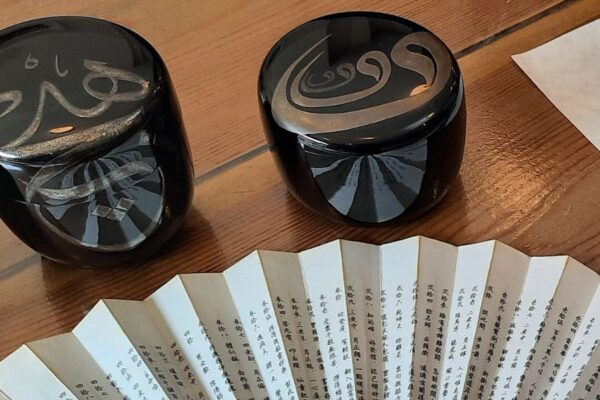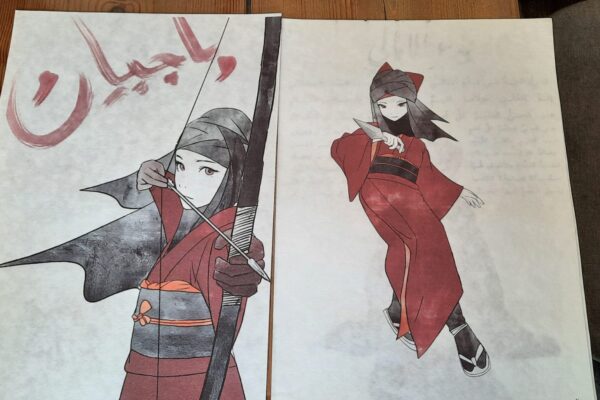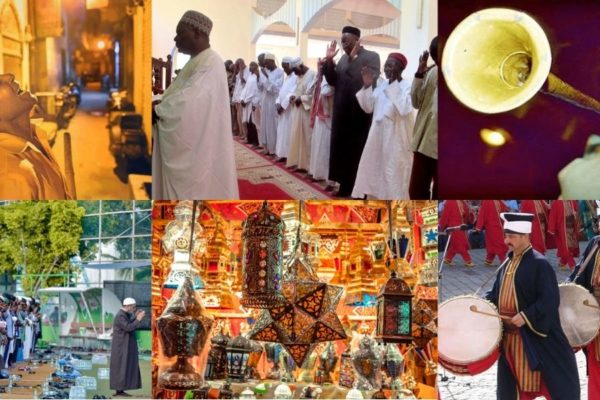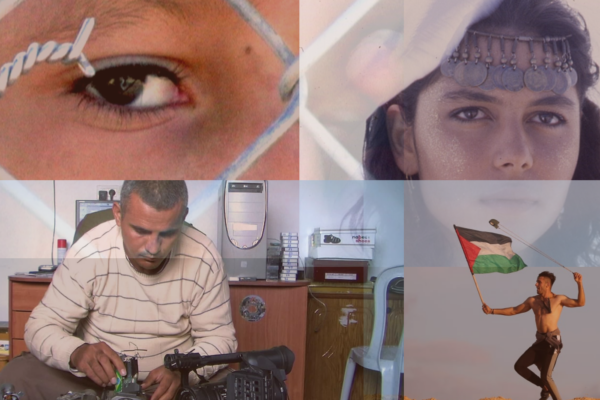“This is a kimono, but this inner layer that we wear underneath the kimono is called ‘juban’. The origin of this word is actually Arabic – ‘jubbah’.” He pointed to the undergarment of his kimono with a smile – “this is jubbah, a half-Arab, half-Japanese outfit!”
“This is a kimono, but this inner layer that we wear underneath the kimono is called ‘juban’. The origin of this word is actually Arabic – ‘jubbah’.” He pointed to the undergarment of his kimono with a smile – “this is jubbah, a half-Arab, half-Japanese outfit!”
As I walked through the crowded streets of London, I noticed myself feeling a bit more nervous than usual – this wasn’t an ordinary interview I was doing for work. Yes, on paper it was technically just another article I would be writing in a few days time, but personally – this was a huge interview for me. It was my first time meeting and speaking to another Japanese revert to Islam.
Being a Japanese revert myself, I was conscious of the fact that it was extremely rare for this to be happening to me. Not only are there so few Japanese people living in London, but throw in the mix of being Muslim and Japanese – let’s just say I literally cannot remember the last time I had a conversation about religion, about Islam, in the Japanese language.
I had been following Dr. Qayyim Naoki Yamamoto on Twitter for some time – and when I saw that he would be traveling to the UK for a few days to showcase the beauty of the traditional Japanese tea ceremony and its connection to Islam, I jumped on the opportunity for an interview. A few days later, here I was in Brick Lane, the heart of what used to be immigrant East London, meeting another Japanese revert to Islam.
And it wasn’t hard to spot him – standing in a dark blue men’s kimono (the traditional Japanese dress) outside of a Bengali restaurant while speaking on the phone, I couldn’t help but laugh at how odd this situation might seem – two Japanese reverts to Islam, meeting in London, in a Bengali restaurant. But also, what better way to represent Islam today?
We greeted each other both with “Salaamu alaykum” and “Hajimemashite” – it may be because I am so deprived of any Japanese connection living abroad, but there was such joy on my part in being able to speak Japanese, and more importantly, listen to Dr. Yamamoto speak in Japanese on Islam, and being Muslim. I was ready to dive full-in on Islamic values in Japan, religion versus culture, and theories on ancient Japanese morals being tied to Islamic spirituality.
So it was only natural, then, that the first 20 minutes of sitting down with him we spoke of our respective cities in Japan (him being from Okayama and my family being from Osaka), his time studying in Kyoto (as someone from Osaka, it’s in our DNA to complain about our neighbor Kyoto and he good-heartedly agreed and joined in the bashing), and how hard it was to find real Japanese food abroad (no more sushi please).
He was confident, and talkative on just about anything – which I realized was why his role, as a very visual Japanese Muslim representative, was so important. While he claimed to only be representing his own experiences of being a Japanese Muslim, I couldn’t help but think that what he was doing was so important not only for our divisive and somewhat broken Muslim ummah, but for ordinary Japanese people as well.
We finally started to get settled in for the “real” interview, where I had clumsily written down a few questions I wanted to ask him about Japanese culture and Islamic spirituality. I skipped over his revert story – I know from personal experience at the end of the day, it should matter more what we’re doing today as Muslims, how we live our lives now, rather than the one moment where we said our shahada.
I was curious about his thoughts on Japanese culture and Islamic culture – was there any way the two could have a healthy relationship? Japan today prides itself on being homogenous, on being an isolated island nation, and on having seemingly age-old traditions that date back to the beginning of time – so was there any room for Islam in all of this?
His answer was an enthusiastic yes.
“Muslims are becoming more and more visible in Japan,” he stressed, “and I don’t mean just Japanese Muslims but, for example, Pakistani Muslims, Indonesian, Malaysian, and Egyptian Muslims. We’re starting to enjoy the diversity. And we need to use this growing trend to contribute not only to Japanese society, but for the Muslim ummah as well.”
While diversity is slowly gaining normality in Japan, Dr. Yamamoto reluctantly mentioned how with any movement towards diversity there will always be backlash. In Japan as well, there is unfortunately a growing trend of ultra-nationalist, almost fascist Japanese individuals and groups who are adamantly against any sort of cultural diversity.
“These people say that we, as Japanese, are at a risk of contamination,” Dr. Yamamoto said as we both grimaced, “but I see this claim as really superficial. If you actually look into our history and culture, there is no such thing as a pure Japanese culture.”
I was surprised at his statement – as someone who is mixed (with my father being non-Japanese), it was a reality from the day I was born that I was not “pure” Japanese, that I might not be able to represent “pure” Japanese culture and values. While of course, inherently, I knew this to be false, it still came as a surprise to hear Dr. Yamamoto say that there is no such thing as pure Japanese culture.
“One good example is by looking at our clothes,” Dr. Yamamoto said, pointing to his dark blue kimono. “This is a kimono, but this inner layer that we wear underneath the kimono is called ‘juban’. The origin of this word is actually Arabic – ‘jubbah’.” He pointed to the undergarment of his kimono with a smile – “this is jubbah!”
He laughed as he said, “And these right-winged Japanese people wear kimonos to show that they are ‘real’ Japanese, but this is actually a half-Arab, half-Japanese outfit!”
As I recovered from the shock of this new information, secretly dying to call my mother on the spot to hear her reaction, he started pulling out the traditional Japanese tea ceremony set that he had carried with him. In addition to everything else he has accomplished (mashallah), Dr. Yamamoto is also a tea ceremony master – having learned of this traditional craft from his grandmother, who was also a tea ceremony master.
The Japanese tea ceremony is not for the faint of heart – traditionally, it can last up to four hours and is a serious, reflective, and spiritual ceremony that is not only about making matcha (Japanese green tea), but is infused, literally, with deeply-held symbolic treasures.
Dr. Yamamoto pulled out the traditional, black container that is used to hold the dark green, powered matcha. “This,” he said, “is called natsume.” He waited with a slight dramatic pause, then continued, “natsume means dates – tamar, the dried fruits. Dates are not a native fruit of Japan, but are imported – so how is it that we named this small container after dates?”
I stopped taking notes to simply listen and be present as he continued, my fascination growing by the second. “It’s because, at that time, Japanese merchants were open-minded, and had so much interaction with other merchants from around the world. They named this container after dates, after interacting with or seeing it. So many people think that ‘Japanese-ness’, or Japanese culture, was something that was created at the very beginning. But it’s not.”
“During the Warring States period (from the 15th century to the 16th century), Osaka, your city,” he said, pointing to me, “was like New York. It was so diverse, with every kind of peoples living there. That diversity enabled Japanese people at the time to grow their culture”. And much of what we see today, and think of as ‘pure’ Japanese culture, is in fact from this time period when Japan thrived off of the interaction from our western borders.
All of this background on diversity and our history is necessary, according to Dr. Yamamoto, in order to understand one thing: “Being Japanese is not an ethnicity. Being Japanese is a creed, living a life with Japanese aesthetics. And this,” he said, “is what will help us understand how to be Japanese Muslims.”
This is a deeply important – and shocking – statement. Was he stating that basically anyone, anyone who lives a life with certain morals, values, and aesthetics could be a Japanese Muslim? Was Dr. Yamamoto casually redefining the very notion of ethnicity, culture, and identity here in this small Bengali restaurant on Brick Lane?
Mentioning how problematic it was to define being Japanese as purely an ethnicity – citing examples of the Ainu, the native peoples of Japan, people from the southern islands of Okinawa, and people of mixed decent – Dr. Yamamoto explained that once the thinly veiled notions of what it means to be ethnically Japanese are unraveled it becomes more interesting to understand what it actually means to be a Japanese Muslim.
“In contemporary Japanese society, this definition of Japanese-ness is really vague. This definition is only being used as an excuse to not accept someone who is uncomfortable to them.” Dr. Yamamoto began to speak earnestly and seriously. “I don’t even think you have to be able to speak Japanese to be Japanese. It doesn’t even matter if you have the passport, there will always be people who question a person’s ‘Japanese-ness’. I think we need to redefine what ‘Japanese-ness’ really is.”
“Being Japanese should be for those who believe in a creed, a certain aesthetics from Japan – like simplicity. We cannot continue to define being Japanese based on geography. And Japanese Muslims can represent this true Japan.”
This notion of redefining what it truly means to be Japanese, propelled by those who identify as Japanese Muslims, is what Dr. Yamamoto now works so tirelessly to represent through his work – the Japanese tea ceremony being one of them.
His journey to showcasing the Japanese tea ceremony to the public was not easy for him, however, as a newly converted Muslim. “I used to think Japanese culture was really non-Islamic, because it was built by non-Muslims,” Dr. Yamamoto explained. “But I began to realize that we need to contemplate – what are our colors? What are our own experiences? So that’s why I started to re-learn about Japanese culture.”
“That’s when I began to discover a lot of beautiful cultural practices – and I realized there is a way for us to express Japanese Islam.”
This realization is what led Dr. Yamamoto to begin his own journey of actively participating in preserving the beauty of many traditional aspects of Japan – and today he designs Islamic Japanese handicrafts that seamlessly blend together Muslim and Japanese art.
For example, Dr. Yamamoto created an Islamicate “Natsume” – remember, natsume is the small black container that usually holds the matcha green tea for the tea ceremonies. He carefully placed two of these containers on the table in front of me, and I was surprised at how natural the Arabic calligraphy melted into the Japanese design of the container.

He leaned forward, clearly at his most passionate during our conversation so far. “Hiç means ‘nothingness'”, he explained, pointing to the Arabic calligraphy on the container to the left. “This nothingness symbolizes the nothingness of this dunya. And in the tea ceremony,” he continued, “the reason why we do the ceremony is not to prove ourselves but to embrace our own nothingness.” Tasawwuf, the process of becoming and realizing the spiritual reality of understanding Allah, seems to have a place in the Japanese tea ceremony – something I would have never guessed prior to listening to Dr. Yamamoto.
As if to further prove my point that he was literally creating groundbreaking work in the field of Islamic culture, Dr. Yamamoto explained that in the Japanese tea ceremony, it is traditional to repeatedly wipe the surface of these containers to purify one’s thoughts and soul during the ceremony. With Islamic calligraphy on the containers now, for Muslims, we could also perform dhikr at the same time while repeatedly cleaning the Arabic calligraphy.
I couldn’t help but feel an immense feeling of satisfaction, looking at Dr. Yamamoto’s handicrafts – was there anything else that he could possibly surprise me with before I started to wrap up our interview?
It turns out he also illustrates and writes his own Japanese manga series, with a hijabi ninja as the protagonist.
“Personally, I’m the biggest fan of manga.” Dr. Yamamoto said with a youthful flair of energy. “I grew up with Naruto, One Piece, and those types of manga. And what’s amazing is that so many Muslim children outside of Japan also love Japanese manga – Dragon Ball, Captain Tsubasa, Detective Conan. Japanese manga is becoming also a lingua franca, it’s like a common language now!”
He began pulling out sheets of paper from his folder as he explained, “We need to use this to build a bridge between Japanese society and Muslim society. I started designing my own manga-style Muslim character,” he said, showing me a beautifully intricate hand drawing, “Because so many TV shows or movies with Muslims characters often try to reduce the Muslim identity into an ethnic identity. The character might be Muslim, but they never discuss ‘Muslim-ness’. It’s so rare to see a movie character who is Muslim and also wearing hijab – and I don’t think this is fair. Hijabi women are everywhere, but why do we not see them?”
I looked down at his drawing, taking in the details of everything in his Muslim manga character. She was wearing a traditional kimono, but was also wearing hijab – and the hijab even looked different somehow, it was a style I couldn’t place.
“I’ve started my own hijabi ninja series,” he said with a big smile. I couldn’t help but smile along at the idea – hijab and ninja in the same sentence? Kimono and Muslim in the same character? If there was anything that could represent Dr. Yamamoto’s life work in one drawing, it would be this character.

I pointed to the hijab he had drawn for the ninja character, still intrigued by the design. Dr. Yamamoto smiled immediately and nodded enthusiastically.
“I designed both the style of the kimono and the hijab,” he explained. “The hijab I designed and created by myself to create a harmony between the two. And I think that it appears quite natural, in that she simply looks ‘cool’, like a manga character or hero.”
He pointed to my own hijab. “At first I tried drawing this character with a hijab like yours, or a rather standard style hijab – but it didn’t match the kimono at all. I realized that this hijab style matches Western, or modern clothing. Western clothing often lies on the shoulders and then falls down the body – so the hijab will also naturally follow these same shapes.” He stood up, showing the men’s kimono he was wearing.
“But with a Japanese kimono, the main focus is the obi (the large cloth wrapped horizontally across the lower torso),” he said, stretching out his arms. “So we’re not wearing our clothes from the shoulders down but wearing it with our waist area. So the flow of fabric doesn’t flow down, but rather stays upright for us. So for the hijab I designed, I used the same pattern as a kimono – staying upright and then flowing down from the sides. Just like a kimono.”
Although to an outsider it may seem like a trivial drawing design in the way he had created a new hijab style, for us looking over his drawings it felt very real, and very groundbreaking as well.
“British Muslims have their own hijab style, Turkish people have their own style, so what I’m trying to do is let Japanese Muslims, or Muslims who wear kimono, have their own style of hijab too,” Dr. Yamamoto explained. The kimono itself is also arguably very Islamic – it covers the full body, doesn’t show the shape of the body, and flows naturally as a garment one could even wear to the masjid.
So. Why create this series in the first place? What was his overall goal in creating this series? After all, it costs a lot of money to draw, write, and produce a manga series and he had plans of even making it into an anime (animated TV series).
“Muslim children in countries like the US, Japan, or Europe struggle a lot,” Dr. Yamamoto said seriously while he began to pack away his drawings. “Every morning when they wake up they have to make the choice to go to school and face teachers or students who may ask them unpleasant or uncomfortable questions about Islam. They have to give an answer to prove themselves – but in the end, they are only children. Even I, myself, would struggle to answer these questions. Just imagine how lonely a lot of these children must feel when walking back home after something like that.”
I paused, contemplating his words. Both of us were reverts to the religion, so never had to grow up as Muslim children in an often Islamophobic world. His empathy, and compassion, were truly humbling.
“The reason why I’m sharing this manga character is that I want to tell Muslim children that they are not alone. They might feel defeated or alone, but these hijabi ninjas,” here he laughed, perhaps at the absurdity of those two words combined but more likely in a hopeful excitement of the future, “these hijabi ninjas will always stay with them. They face the same challenges as these Muslim children, but yet I always try and find a strong face for the main hijabi character. This manga series is about those Muslim children.”
As we packed up our things, making small talk as we left the Bengali restaurant into the hot summer air of London’s busy streets, I couldn’t help but notice how ordinary our conversation was as we headed towards the train station.
He chatted about the weather, joked about no one noticing his kimono in London because it was just too diverse to even care about yet another person dressed in traditional clothes, and how he knew quite a bit about the comedy shows from my city of Osaka.
Perhaps that was what was most profound to me after our interview – just how ordinary this should feel. While the work he is doing is groundbreaking and truly inspirational, at the end of the day, we were also just having an ordinary conversation. Two Japanese reverts to Islam, discussing hijabi ninjas and Islamic tea ceremonies and redefining ethnic identities was just another day for us.
And I guess that is what is so beautiful about being Muslim – anything, truly, is possible by the will of Allah. Even hijabi ninjas.
The transcribing and translation for this article were done by the author alone, and the author takes full responsibility for any mistakes or shortcomings. The author alone takes full responsibility for any misunderstandings or issues with the content of the interview or with any quotations from Dr. Yamamoto.





